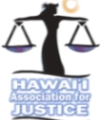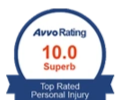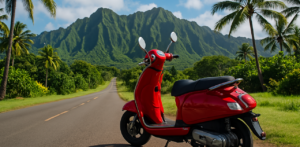
Mopeds easily move through Honolulu traffic and slip into tight on‑street parking stalls. They cost less to run than a car and feel almost like a bicycle. Still, a moped is a motor-driven cycle under state law, and moped drivers must follow many of the same traffic laws that apply to any motor vehicle. Failing to obey moped laws can bring fines—or worse, a life‑changing injury.
If you were hurt while riding, talk with the seasoned moped accident attorney at Recovery Law Center. A quick call lets you schedule a no‑obligation consultation and learn your rights.
What Hawaii Calls a “Moped”
Under HRS § 286‑2, a moped is a two‑wheeled vehicle (or three wheels in rare cases) that:
- Uses an automatic transmission (also called an automatic power drive system)
- Has a motor no larger than 50 cc or 2 horsepower, or an electric motor of equal output
- Cannot exceed 30 mph normal speed on level ground
- Carries no more than one person on two‑wheel models
A machine that goes faster or shifts gears is a motor scooter or motorcycle and must meet different licensing laws.
Valid Motorcycle License
- Driver’s license required: Any valid driver’s license (Class 3) lets you legally ride a moped.
- Moped‑only option: Moped riders who do not drive cars can apply for a moped license (Class 1, similar to a “class MD license” on the mainland).
- Under 18: Teen moped riders must meet driver education requirements, hold a motorcycle instruction permit, and log practice time before the road test.
- Upgrading later: A motorcycle endorsement or full motorcycle license is needed if you move up to a larger bike.
Registration, Plates, and Safety Check
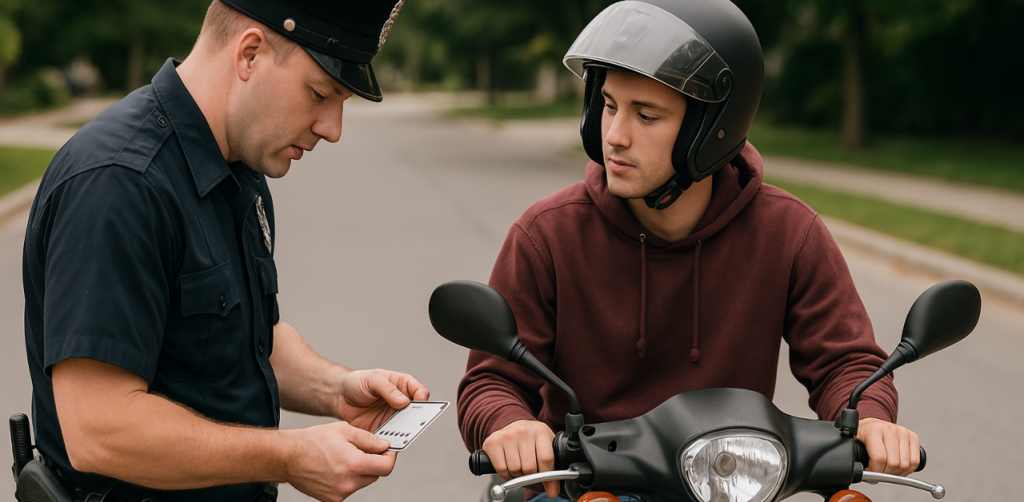
All moped owners must:
- Pay a modest registration fee at the county finance office
- Attach a rear license plate (size is smaller than the car plates)
- Pass a yearly safety inspection that checks brakes, lights, and other rider safety equipment.
Keep the certificate on the bike or in your pocket when you ride.
You Might Need to Carry Liability Insurance
Hawaii still exempts privately owned mopeds from the statewide rule that makes motorcycle owners purchase liability insurance. Yet two situations flip the rule:
- Rental or lease mopeds – The business must carry liability insurance that covers third‑party injury and property damage.
- Three‑wheeled mopeds – Operators must also carry liability insurance similar to motorcycles.
Even when not required, many riders buy a low‑cost policy to protect themselves if they injure someone or hit a fixed or moving object.
Required Safety Gear
Hawaii’s helmet laws say riders under 18 must wear a helmet that meets DOT standards. Adults may ride without one, but police and doctors urge every motorcycle rider to use an approved helmet. Your moped must also have:
- Headlight, tail light, brake light, and reflectors
- A rear‑view mirror
- A muffler that prevents excessive or unusual noise
- Functional brakes on both wheels
Three‑wheel mopeds with a cab must include a seat belt assembly or child restraint system.
Parking Rules
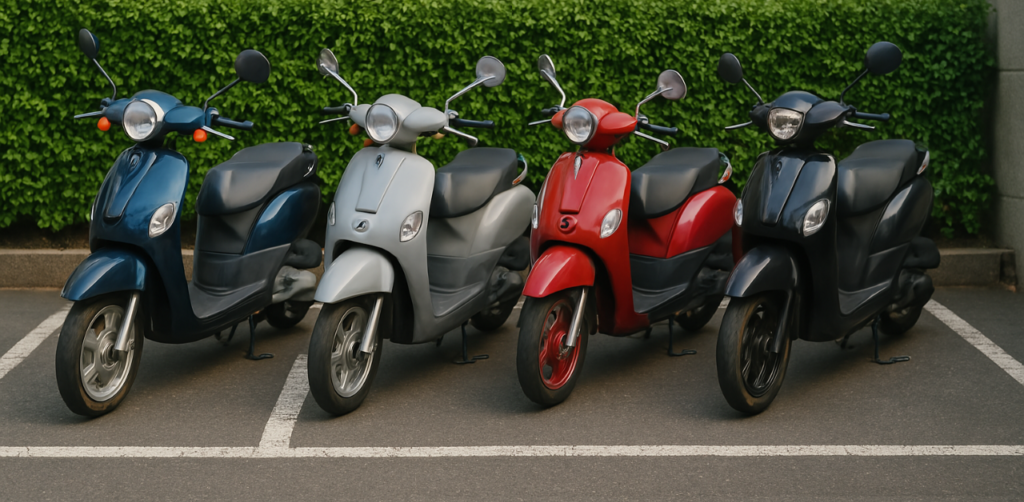
County ordinances give mopeds perks, but they also set limits:
- Look for stalls designating parking stalls specifically for mopeds or parking motorcycles.
- In busy districts, a moped may park perpendicular in a parallel parking space if it does not stick out into traffic.
- Never block sidewalks, driveways, or official traffic control devices.
- Respect time limits in on‑street parking zones.
- Some garages now set aside designated parking spaces with a lower daily rate—check posted signs.
Violations can lead to towing and storage fees.
Speed, Noise, and Engine Mods
- The posted speed limits apply, but the machine may not lawfully exceed 30 mph.
- Modifying the motor to raise top speed or horsepower is illegal and can lead to a fine.
- State law bans cut‑out devices that amplify exhaust sound.
Officers use sound meters and visual inspection to enforce these rules.
Penalties and Points
Tickets for moped infractions range from $75 for a first offense to $200 for repeat violations within a year. Riding without a driver’s permit, failing to obey a police officer, or operating while impaired bring steeper fines and possible jail time. Some offenses add points to your driver’s license record, which can raise insurance rates on any operating motor vehicle you own.
After a Moped Crash
- Move out of traffic if you can do so safely.
- Call 911 and wait for a police officer to file a report.
- Exchange information with drivers and witnesses.
- Take photos of damage, skid marks, and on‑street parking conditions.
- Seek medical care even if you feel okay; hidden injuries are common.
- Contact Recovery Law Center. Our lawyer understands moped cases and the insurance rules that apply. Early legal help protects evidence and lets you focus on healing.
Moped Laws Protect You—So Does the Right Legal Help
Hawaii’s moped rules cover far more than wearing a helmet or staying under 30 mph. They touch every part of the ride, from the license plate on the fender to the spot where you park at night. Knowing these details keeps you legal, lowers crash risk, and helps every road user share space.
If a careless driver ignored the traffic laws and injured you, reach out to Recovery Law Center. A quick consultation with our Honolulu moped accident lawyer can answer your questions and set a plan in motion. Schedule a consultation to help your case.










